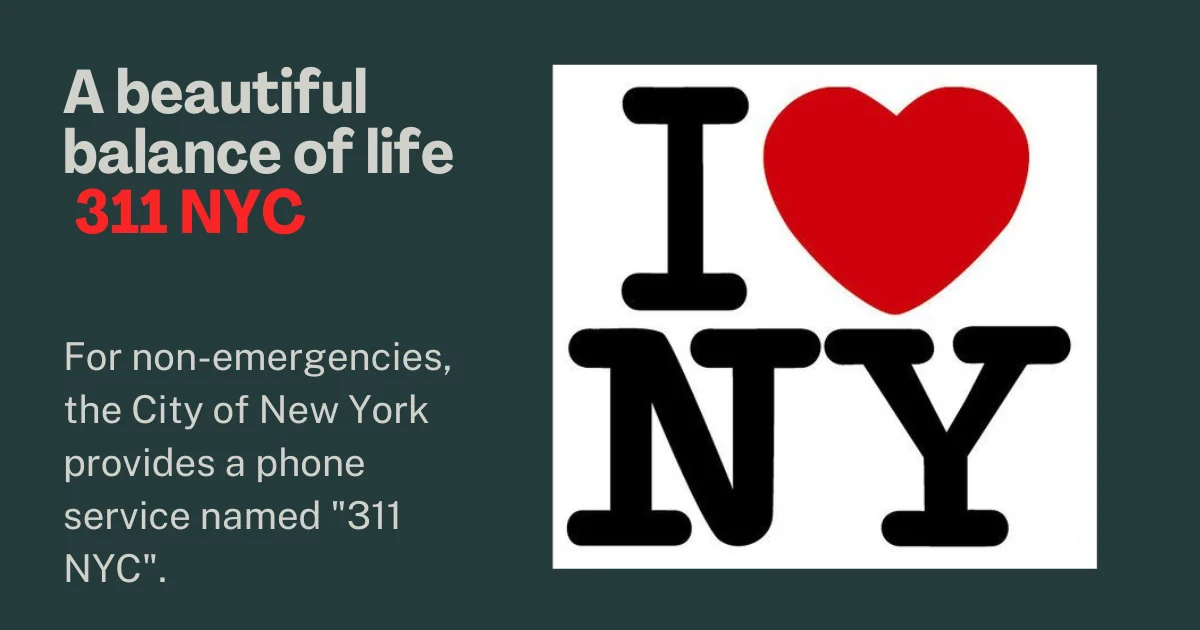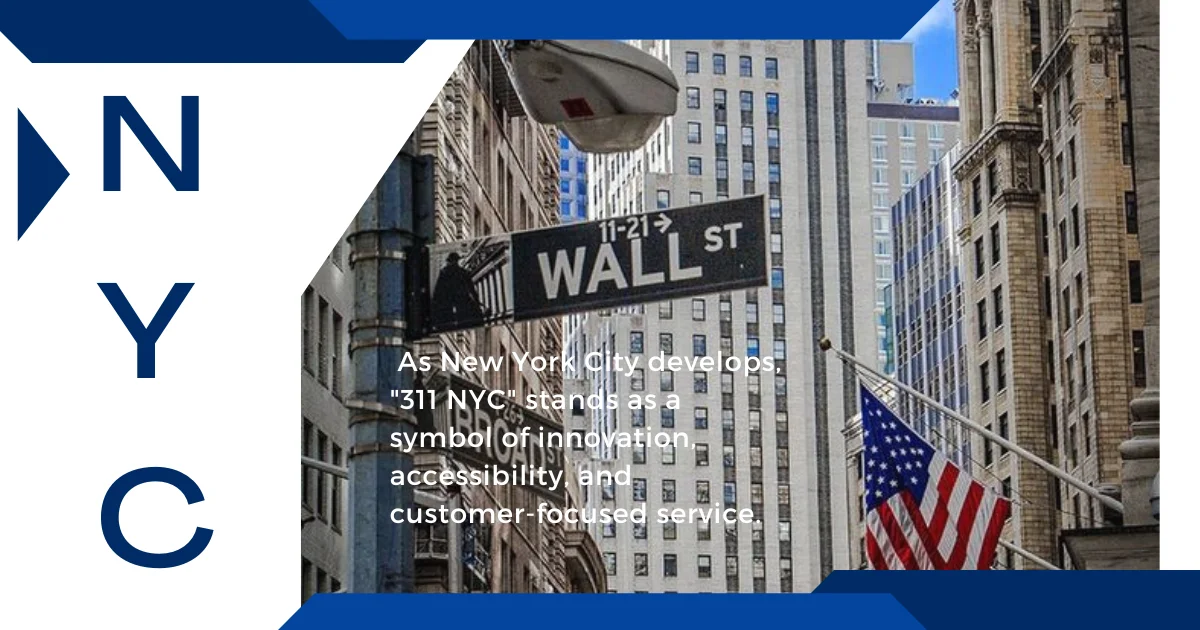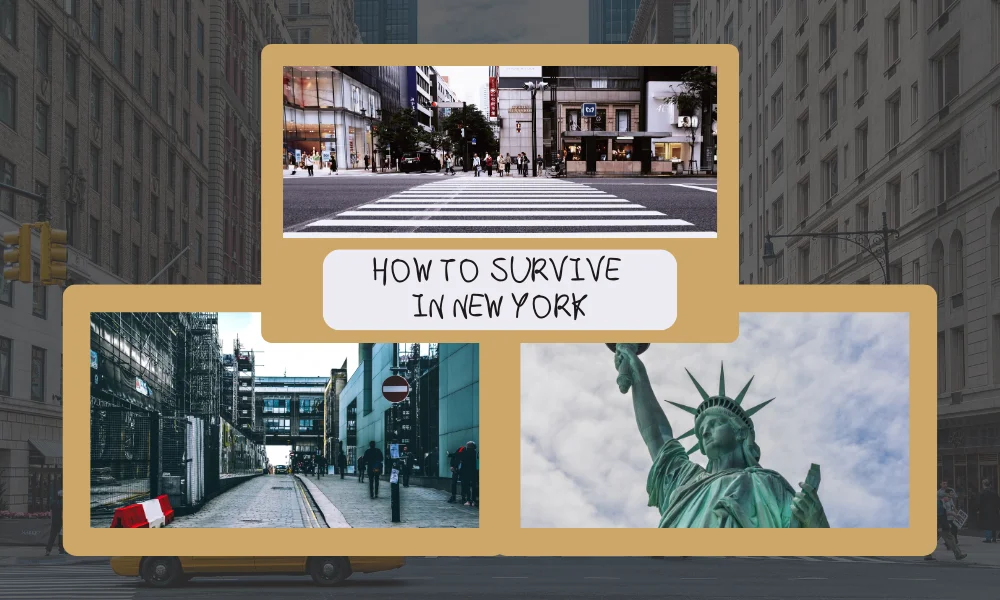311 NYC
The City of New York offers a phone service called “311 NYC” for non-emergencies. It provides a single point of contact for a variety of city services, information, and help to residents, visitors, and enterprises.
One of the world’s most varied cities, New York takes great pride in this fact.
The designated citywide languages are mentioned below, and they are used by NYC311 to offer service in line with Local Law 30.
Using the option in the top right corner of this page, you can translate this website into over 100 additional languages in addition to those listed here.
You can get assistance in more than 175 languages by contacting 311 if your language is not offered online.
In New York City, residents can call “311” to get access to a variety of city services, information, and support. It is intended to be a useful resource that locals and guests may use with ease. Here is a detailed summary:

1. Purpose and Function (311 NYC): Three-digit phone number “311” acts as a primary contact point for questions, service requests, and details about local government services and initiatives.
It aids citizens in navigating the complexity of local services and connecting with the proper departments or authorities.
“311 NYC” was created to make it simple and quick for citizens to access city services and official information. It provides a forum for questions, problem reporting, and information gathering concerning different city-related concerns.
The “311” service is designed to provide a centralized and accessible point of contact for people to get information, help, and services relating to non-emergency issues. A “311” service’s primary duties include:
1. Centralized Access:
For a variety of questions, requests, and information regarding numerous government services and programme, “311” acts as a single point of contact.
People can call “311” for assistance rather than having to make numerous calls to several departments or agencies. (311 NYC)
2. Information Dissemination:
Giving users or callers accurate and current information is one of the main purposes of “311”. This offers information about various city services, policies, plans, and events.
3. Service Requests and Reporting:
Users can dial “311” to report non-emergency problems and service requests. Reporting maintenance problems (such as potholes or broken lamps), noise complaints, issues with public spaces, and more may be necessary. (311 NYC)
4. Assistance and Guidance:
Representatives of “311” are equipped to help callers with a variety of questions and direct them to the best sources. “311” can help, whether it’s learning about local regulations or figuring out how to use a certain service.
5. Accessibility:
“311” seeks to make government information and services accessible to everyone, including those with impairments and various linguistic preferences. Inclusion is guaranteed by the language options and TTY (Text Telephone) service tools.
6. Feedback and Civic Engagement:
People frequently use “311” as a venue to comment on their interactions with government agencies. Authorities can improve service quality and identify areas for improvement with the help of this input.
7. Data Collection and Analysis:
Interactions with “311” might provide information on community issues, trends, and service requirements. Decision-making and resource allocation can be influenced by this data.
8. Non-Emergency Focus:
It’s crucial to remember that calling “311” is not for emergencies. People should call their local emergency number (such as “911” in the United States) for situations that need quick care.

In conclusion, the “311” service’s goal is to give people a convenient, non-emergency way to contact their local government for information, support, and services. It improves civic engagement, streamlines communication, and aids in the smooth operation of neighborhood services. (311 NYC)
2. Access Channels:
You can contact “311” in a number of ways:
- Phone: either by calling (212) NEW-YORK (outside of NYC) or 311 (inside NYC). Making a phone call to “311” is one of the oldest and most popular ways to get help. People can easily reach a representative who can help with questions, service requests, and information by dialing the three-digit number “311”.
- Website: Users can submit service requests and receive information online via the “NYC 311” website.
The official website of many “311” systems enables users to access information, submit service requests, and discover answers to frequently asked issues. The website may provide search capabilities and user-friendly interfaces to make it easier to navigate. - Mobile App: Smartphone users can download the “NYC 311” mobile app, which offers an intuitive user experience for accessing services and information. Mobile apps are now a common way to access “311” services in the digital era. Smartphone users can rapidly report problems, seek services, and get updates while on the go by downloading specialized “311” apps.
- Text Message (SMS): Some “311” systems let users to send text messages (SMS) to report problems or request information. People who prefer text-based communication may find this strategy to be very helpful.
- . Social Media: In some circumstances, social networking networks may provide access to “311” services. To ask inquiries or report problems, users may be able to send direct messages or tweets to the official “311” account.
- . Email: Another way for people to communicate with “311” services is through email. Users can send emails to a specified address to request information, ask questions, or express concerns.
- . Self-Service Kiosks: In some places, self-service kiosks may be installed to let people use “311” services in person. Users of these kiosks can frequently navigate and submit requests using touch-screen interfaces.
- . Interactive Voice Response (IVR) System: Some “311” systems make use of an Interactive Voice Response (IVR) system, an automated telephone system that directs callers through a series of options and prompts to help with their inquiries.In conclusion, access channels give people a variety of ways to communicate with “311” services, making it simple for them to request help, get information, and report problems via their preferred communication channels. Through these channels, consumers can receive services in a way that best meets their requirements and preferences while also improving the user experience.
3. Services and Requests:
“Services and requests” in the context of a “311” system relate to the several kinds of assistance, questions, and requests that users can make through the system.
The services and requests that a “311” service normally responds to are broken down as follows:
Numerous questions and service requests are handled by “311”, including but not restricted to:
- reporting non-emergency problems including streetlight damage, potholes, graffiti, and noise concerns.
- Inquiries for city services, events, and programmes.
- Questions about departments, agencies, and laws of the government.
1. Service Requests:
Numerous service demands can be handled through “311” services. These requests entail informing pertinent authorities of problems or difficulties that need to be addressed. Common illustrations include:
- Reporting problems with street upkeep, potholes, or damaged roads.
- Requesting the removal or cleanup of graffiti in public areas.
- Reporting broken traffic signals or streetlights to the appropriate authorities.
- Reporting water leaks or utility-related problems.
- Requesting tree removal or trimming of trees that have fallen.
2. Information Inquiries:
People can call “311” to learn more about a variety of subjects, initiatives, and rules. Examples of information requests are as follows:
- Requesting information on routes and schedules for public transit.
- Looking for details about activities, festivals, or events sponsored by the city.
- Asking about development, zoning, or permit policies and laws in the city.
3. Non-Emergency Assistance:
In non-emergency situations where a prompt reaction is not necessary, “311” services can help. This might entail:
- Requesting details on medical services, immunization canters, or public health initiatives.
- Asking about after-school activities, leisure opportunities, or community programme.
4. Noise Complaints:
When loud parties, building work done at odd hours, or other noise disruptions occur in a neighborhood, residents can call “311” to report them.
5. Reporting Public Space Issues:
People can alert authorities to problems that harm public areas, such as:
- Reporting inappropriate garbage disposal or illegal dumping.
- Notifying authorities of any broken playground equipment, signs, or benches on public land.
6. Accessibility Concerns:
To report issues with accessibility for public spaces, sidewalks, or transportation, call “311”. This can entail asking for lifts, curb ramps or accessible doorways.
7. Feedback and Suggestions:
Some “311” systems enable people to give criticism, recommendations, or compliments regarding city services, albeit not all of them handle this. The quality of services may be improved with the use of this information.
It’s crucial to remember that “311” services are only meant for non-emergencies. People should always call their local emergency number, such as “911” in the US, in cases where they need immediate assistance.
In conclusion, “services and requests” inside a “311” system cover a wide range of questions, demands for help, and reports that improve the effectiveness of problem-solving and the general quality of life in a community.
4. Multilingual Support:
In order to serve the diverse population of NYC, “311” provides assistance in a variety of languages, guaranteeing that people who don’t understand English may readily access city services and information.
The “311 NYC” service offers support in a variety of languages to cater to New York City’s multicultural population. By doing this, it is made possible for people to access services and information effectively who do not know English.
The availability of services and information in a variety of languages to accommodate people who speak languages other than the regional tongue is referred to as multilingual assistance.

Multilingual support in the context of a “311” system ensures that a diverse population may access services and communicate successfully. This is how it goes:
1. Language Accessibility:
Multilingual “311” services provide assistance and information in a number of languages. This makes sure that people who feel more at ease speaking a language other than the official language of their country can still use the services.
2. Language Options:
When using a “311” system, callers or users may select their language from a menu of available options. They can decide which language they feel most at ease comprehending or speaking.
3. Assistance in Preferred Language:
Callers can use their favorites’ language to converse with a “311” representative. This makes it easier for them to communicate their questions, service requests, or issues.
4. Inclusivity and Accessibility:
Promoting diversity and making sure that language obstacles don’t impede people from using vital city services are both made possible by multilingual support. It makes it possible for all citizens to access government services, regardless of their language proficiency.
5. Community Engagement:
“311” systems foster involvement and participation from many populations by providing services in multiple languages. As a result, there may be more trust between locals and government.
6. Languages Offered:
Depending on the region’s linguistic richness, there may be a difference in the languages given for multilingual help. They frequently contain both languages that are prevalent among immigrant populations as well as those that are frequently spoken in the community.
7. Written Materials:
Some “311” systems offer written items, such as forms, paperwork, and informational brochures, in addition to spoken contact.
8. Digital Platforms:
The support for several languages extends to digital platforms as well. Various languages may be available for information and services on websites, mobile applications, and other online resources.
Finally, multilingual support in a “311” system makes sure that people may access government services, information, and assistance regardless of their linguistic preferences. It exhibits dedication to a community’s inclusivity, diversity, and efficient communication.
5. Accessibility:
Accessible to individuals with disabilities is “311”. For those who have speech or hearing problems, there is a TTY service available.
Designing and delivering resources, places, and services that are inclusive of and useable by people of all abilities, including those with disabilities, is known as accessibility.
Accessibility in the context of a “311” service makes sure that everyone, regardless of their physical, sensory, cognitive, or technological limitations, may access and use the service. This is how accessibility functions:
1. Inclusive Design:
A “311” service that is accessible is built from the ground up to serve a wide range of users, including people with impairments. It considers varied demands and offers alternatives that facilitate simpler contact and communication for everyone.
2. Physical Accessibility:
Facilities, kiosks, and other service access points must be physically accessible to accommodate those with mobility issues. This can feature broad doorways, lifts and ramps for wheelchairs.
3. Digital Accessibility:
Digital accessibility is essential for online platforms like websites and mobile applications. It entails creating user interfaces that screen readers can navigate, offering alternative text for images, utilizing accessible color contrasts, and guaranteeing assistive technology compatibility.
4. Communication Accessibility:
Communication alternatives that are suited to people with hearing or speech difficulties may be provided by “311” services. For example, this can entail providing TTY services for phone calls or sign language interpretation for in-person contacts.
5. Visual Accessibility:
The needs of people with visual impairments are taken into account in visual accessibility. Information must be made available in alternate formats, such as big print, braille, or screen-reader-friendly digital formats.
6. Cognitive Accessibility:
An accessible “311” service may employ clear and concise language, straightforward navigation, and simple images to accommodate people with cognitive limitations.
7. Assistive Technology Compatibility:
For digital platforms to be usable by people with impairments, assistive technology like screen readers and voice recognition software must be compatible with them.
8. Training and Awareness:
Staff personnel should undergo training on how to deal politely and efficiently with people with disabilities before they interact with users through a “311” service. They ought to be aware of readily available communication methods.
9. Compliance with Regulations:
For public services, including online platforms and physical facilities, many regions have laws and regulations in place that require specific degrees of accessibility.
10. Universal Design:
The idea of universal design entails producing goods, settings, and services that may be used by as many individuals as feasible without specialized design or adaption.
In conclusion, accessibility in a “311” service makes sure that people with all abilities may use services and interact with their local government. It upholds the values of diversity, equality of access, and inclusion.
6. Operational Hours:
Residents are able to call “311” at any time to request assistance or report problems because it is open 24 hours a day, 7 days a week.
Users can conveniently contact “311 NYC” at any time of the day or night because it is open 24/7.
The times that a service or facility is open and usable are referred to as its operational hours. When people can receive help, information, and services through a “311” service depends on its operational hours. Here is how business hours operate:
1. Service Availability:
Callers or users can contact “311” services during certain working hours to ask for help, submit requests, or access information. These times are often chosen to give users the most convenient access.
2. Around-the-Clock Service:
Many “311” services strive to be accessible around-the-clock so that people can call for help whenever they need it, day or night. This is especially helpful for reporting critical issues and inquiries that need to be addressed right away.
3. Flexibility and Convenience:
People who work during regular business hours or have other commitments can still utilize the service by providing operational hours that go beyond standard business hours.
4. Shifts and Staffing:
“311” services frequently work with rotating shifts to guarantee there are personnel accessible to help calls at all times in order to provide continuous service.
5. High Demand Periods:
In order to accommodate periods of high demand, such as during severe weather, public emergencies, or times when a particular service is in great demand, operational hours may be changed.
6. Digital Platforms:
Operational hours govern when consumers can use online services, make requests, and get information on digital platforms including websites and mobile apps.
7. Availability of Information:
Some “311” services may provide recorded information or self-service choices for customers who call during off-peak hours even when personnel are not on duty.
8. Holidays and Special Events:
Over holidays or for particular occasions, operational hours could change. Depending on the nature of the event, several “311” services may have limited staffing during these hours or adjusted their hours.
9. Regional Differences:
Depending on the area and the particular requirements of the community, different hours may be in operation. Compared to rural areas, urban places could have longer operating hours.
In conclusion, the “311” service’s operating hours define when consumers can access help, data, and services. The programme aims to be flexible and sensitive to the needs of the community with 24-hour availability.
7. Privacy and Confidentiality:
The data submitted through “311” is kept private and is only used to respond to questions and fulfil service requests.
When people connect with a service like “311,” their personal information and sensitive data are protected by the fundamental principles of privacy and confidentiality. Here is how such a system maintains these values:
1. Data Protection:
The security of user-shared sensitive and personal data is a top priority for “311” services. This covers information given in response to questions, service requests, and conversations with representatives.
2. Secure Systems:
Secure technology and protocols are used by “311” systems to protect user data from unauthorized access, breaches, or misuse.
3. Limited Access:
The “311” system’s authorized workers are the only ones having access to user information. This makes it more difficult for unauthorized people to access or read sensitive data.
4. Consent and Disclosure:
User information is kept private, and “311” representatives frequently ask for permission before sharing any information with outside parties.
5. Legal and Ethical Obligations:
When it comes to the gathering, storing, and use of personal information, “311” services follow all applicable legal and ethical requirements. They abide by privacy and data protection legislation.
6. Purpose Limitation:
User information gathered by “311” services is normally used only to respond to questions, fulfil service requests, and disseminate information. Without the user’s permission, it is never utilized for unrelated purposes.
7. Anonymity and Pseudonymity:
Some “311” systems permit users to remain anonymous or use a pseudonym when making information requests or reporting problems, depending on the circumstances of the encounter.
8. Data Retention:
User data is kept on file for a predetermined amount of time that is either set by data protection laws or the “311” service’s operational requirements. Data is normally securely erased after this time frame.
9. Secure Communication Channels:
The communication channels used by users to connect with “311” personnel over phone conversations, internet, or applications are encrypted and secured to avoid data eavesdropping.
10. User Education:
Users are frequently informed by “311” services about their data protection policies and how their personal data is utilized. Users can so make more informed decisions.
In conclusion, the operation of “311” services depends on privacy and confidentiality. Respecting these guidelines fosters user confidence in the service and guarantees that personal data is kept secure and used only as intended.
8. Feedback and Engagement:
Residents can also submit comments on city services through the “311” system, which aids city officials in assessing public opinion and enhancing service delivery.
Additionally, “311 NYC” acts as a forum for civic participation. Users can offer comments on city services, which supports continuing attempts to improve them.
A “311” service’s primary elements are feedback and engagement, which enable users and the service provider to communicate in order to improve services and elevate the user experience as a whole.
Here is how participation and feedback operate within a “311” system:
1. Feedback Collection:
Users of “311” services are encouraged to provide comments on the service, the caliber of the help they received, and any suggestions for improvement.
2. Surveys and Questionnaires:
Users’ structured input can be gathered using surveys and questionnaires. These technologies assist the service provider in gauging user happiness and locating potential improvement areas.
3. User Suggestions:
Users are encouraged to offer comments on how services might be enhanced, streamlined, or made more user-friendly through “311” systems.
4. Issue Resolution:
Feedback obtained through “311” services may result in an issue being resolved quickly. An issue with the service itself can be rapidly resolved if a user reports it.
5. Service Evaluation:
The “311” service’s performance and efficiency are evaluated using feedback on anything from the user interface to the response of the agents.
6. Continuous Improvement:
“311” services can find trends, recurrent problems, and trouble spots by examining user comments. The provision of services is continuously improved thanks to this data.
7. Community Involvement:
By interacting with users through feedback mechanisms, one can promote a sense of community. The relationship between the service and the community it serves is improved when users feel that their thoughts are respected.
8. Transparency:
“311” services exhibit transparency in their business practices by disclosing the outcomes of user feedback and outlining the modifications taken in response to that feedback.
9. Open Communication:
Keeping the lines of communication open with users is important for user engagement. This may entail answering questions, resolving issues, and providing updates regarding service upgrades.
10. User-Centered Approach:
A user-centered approach to the creation and delivery of services benefits from interaction and feedback. The “311” service’s priorities and direction are shaped in part by user input.
In conclusion, participation and feedback are essential for a “311” service to remain adaptable to customer needs and progress through time. The service becomes more effective, efficient, and suited to the needs of the community it serves by actively seeking out and adopting customer feedback.
9. Not for Emergencies:
It’s critical to keep in mind that calling “311” is not an emergency. Residents should call “911” for emergency assistance from the police, fire, or medical personnel.
When speaking of services like “311,” the qualifier “not for emergencies” is essential. It implies that the service is not designed to deal with critical problems that demand prompt attention.
It is intended for non-emergency questions, requests, and help. Why this distinction is significant is as follows:
1. Emergency Situations:
The phrase “Not for emergencies” emphasizes the fact that life-threatening situations, crimes in progress, medical emergencies, and fires shouldn’t be reported through services like “311”. People should always call the appropriate emergency number under these circumstances, which in the US is “911”.
2. Efficient Resource Allocation:
Resources can be distributed more effectively by saving “311” services for non-emergencies. While non-emergency agencies like “311” address less urgent issues, emergency services can concentrate on responding to immediate threats.
3. Preventing Misuse:
The misuse of the “311” service for emergencies can be avoided by having open communication about its intended usage. This makes it possible for emergency personnel to concentrate on serious occurrences.
4. Proper Channeling:
Having separate channels for emergencies and non-emergencies makes sure that people may get the right amount of reaction and help depending on the circumstance.
5. Time-Sensitive Response:
“311” services can offer prompt responses and support for non-emergencies without taking resources away from urgent circumstances.
6. Public Safety:
By directing people to the appropriate channels for urgent assistance, it helps to ensure public safety to make it very clear that “311” is not for emergencies.
7. Preventing Delays:
When calling “311” in an emergency, there may be delays in getting the help you need, which could endanger lives and damage property.
8. Raising Awareness:
The public’s understanding of the difference between emergency and non-emergency services fosters resource management and improves all-around community safety.
As a reminder that “311” services are intended for non-urgent queries and help, the phrase “not for emergencies” is included at the end.
It makes sure that emergency services can concentrate on pressing problems while still being a useful tool for treating non-urgent issues and enhancing community services.
Conclusion OF 311 NYC
In conclusion, “311 NYC” is an essential tool for connecting locals and visitors to non-emergency city services, information, and support.
It streamlines contact with numerous city agencies and departments, encouraging civic engagement and improving New York City’s quality of life.
“311 NYC” is a crucial resource in the humming metropolis of New York City, providing a centralized and easily accessible way for locals, tourists, and businesses to get in touch with a wide range of city services, information, and support.
The city’s dedication to effectiveness, inclusion, and improving the quality of life for its varied people is embodied in this comprehensive system. Following our investigation of “311 NYC,” the following important conclusions became clear:
1. Practicality and Accessibility:
The 24-hour availability of “311 NYC” ensures that people may access information, report problems, and request assistance whenever it is most convenient for them. The city’s dedication to offering services that are accessible to everyone is reflected in this commitment to accessibility.
2. Multifaceted Services:
“311 NYC” functions as a flexible platform that accommodates a wide range of questions and requests, from reporting potholes to requesting information about public events. Its capacity to deal with a variety of non-emergency issues makes using city services easier.
3. Inclusivity across languages:
“311 NYC” eliminates language barriers by providing assistance in different languages, ensuring that every New Yorker, regardless of linguistic background, can access services and efficiently connect with municipal government.
4. Civic Participation
The “311 NYC” system promotes community interaction and active participation beyond simple transactions. Residents are given the opportunity to influence the city’s services and improvements through gathering comments, recommendations, and grievances.
5. Privacy and Data Protection:
“311 NYC” protects user personal information and upholds privacy and confidentiality. This builds user confidence and ensures that sensitive data is treated with the highest care.
6. Clearly Defined Boundaries:
The statement that “311 NYC” is “not for emergencies” acts as an important reminder to route serious issues through the proper channels. Because of this clarity, emergency personnel can concentrate on pressing dangers.
7. Ongoing Improvement:
“311 NYC” user feedback is a vital resource for ongoing enhancements. The city’s focus to improving services based on user feedback shows a commitment to changing with the demands of its citizens.
“311 NYC” shines as a light of modern administration in a city as vibrant and dynamic as New York, reducing procedures, promoting participation, and reflecting the city’s motto of “making it easier for you to get things done.” “311 NYC” is still a symbol of innovation, accessibility, and community-focused service as New York City develops.


consectetur et fugiat est velit est quod provident. iure sunt odio mollitia libero voluptate.